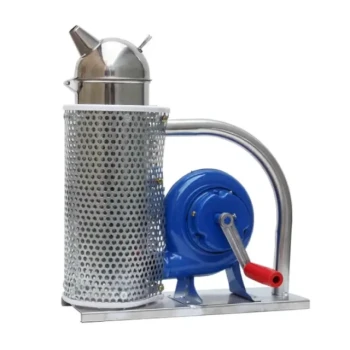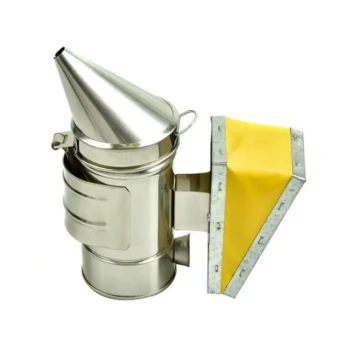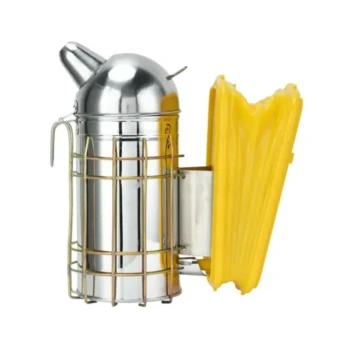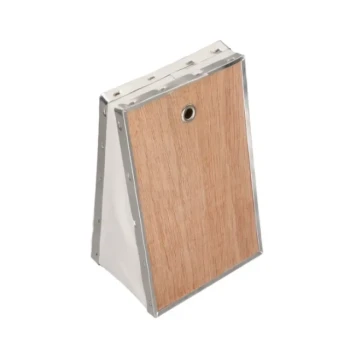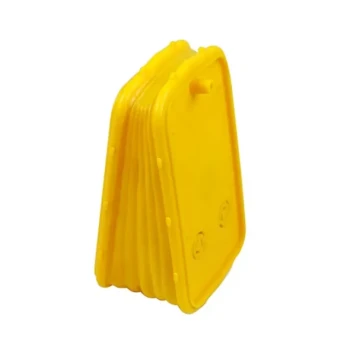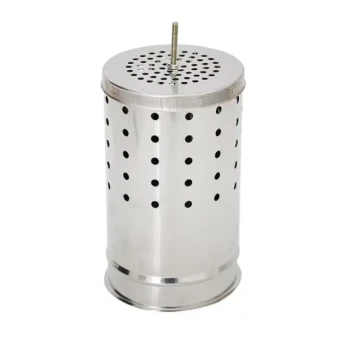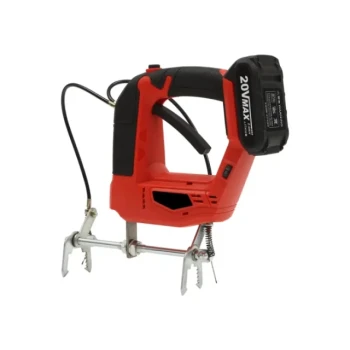The ideal bee smoker fuel is any natural, untreated material that smolders to produce a high volume of cool, white smoke. The most reliable and widely used options include pine needles, untreated burlap, wood shavings, and commercial compressed cotton. These materials burn slowly and consistently without releasing toxic fumes that could harm your bees or contaminate the hive.
The specific material you use for fuel is less important than its properties. The goal is to generate cool, dense smoke that masks bee alarm pheromones without agitating or harming the colony. Your fuel must be completely natural and free of any chemicals, glues, or inks.
The Guiding Principles of Smoker Fuel
Before choosing a material, it is critical to understand what makes a fuel effective and safe. The quality of the smoke is far more important than the fuel source itself.
It's About Masking Pheromones
When a bee feels threatened, it releases alarm pheromones, primarily isopentyl acetate, which signals danger to the rest of the colony. Cool, white smoke effectively masks these chemical signals, preventing a widespread defensive response and keeping the hive calm.
The "Cool Smoke" Imperative
The goal is smoldering, not open flame. You want cool, white smoke, which is the product of incomplete combustion. Hot, dark smoke from a fire that is burning too efficiently will agitate bees and can even burn their delicate wings.
The Non-Toxic Mandate
This is the most important rule. Any fuel that has been treated, painted, or contains synthetic materials like plastic or glue will release toxic fumes. These toxins can kill bees, weaken the colony, and contaminate your honey and wax, rendering them unusable.
A Breakdown of Common Fuel Categories
Beekeepers use a wide variety of natural materials based on effectiveness and local availability. These can be grouped into a few key types.
Woody & Dense Materials (The Long Burn)
These fuels form an excellent base for a long-lasting smoker session. They burn slowly and consistently once lit.
- Pine Needles: A classic choice. Once dry, they light easily and produce a pleasant-smelling smoke.
- Wood Shavings or Pellets: Use only untreated hardwood or softwood shavings. Pellets made for smoking food are also a safe and very long-burning option.
- Rotten or "Punk" Wood: Decomposed, spongy wood found in forests is an excellent, slow-burning fuel.
- Pine Cones: Small, dry pine cones can be used, but ensure they are free from sap, which can burn too hot.
Fibrous Materials (The Quick Light)
These materials catch fire easily and are perfect for starting your smoker or for adding on top to produce a quick puff of thick smoke.
- Burlap (Hessian): Cut from natural jute or hemp sacks. Ensure the burlap has not been treated or used to store chemicals.
- Untreated Cotton: Commercial smoker fuel is often made of compressed cotton. You can also use scraps of 100% cotton fabric, like old denim.
- Cardboard & Paper: Corrugated cardboard (with no glossy print or tape) and paper egg cartons are effective but burn quickly.
Dried Botanicals (The Aromatic Addition)
Many beekeepers add dried herbs on top of their primary fuel for a more pleasant aroma.
- Dried Herbs: Lavender, bay leaves, and mint can be used sparingly.
- Other Plant Matter: Dried materials like corn cobs, sumac bobs, or even dried orange peels can be used. Always confirm a plant is non-toxic to bees before using it.
Understanding the Trade-offs and Pitfalls
Choosing a fuel involves balancing convenience with performance. Awareness of common mistakes is key to protecting your bees.
Burn Time vs. Ease of Lighting
Fibrous fuels like cotton and cardboard light very easily but burn out fast. Dense fuels like wood pellets or punk wood can be difficult to get smoldering but will produce smoke for a much longer time. A common practice is to start the fire with a fibrous material and add denser fuel on top.
The Hidden Risk of Contaminants
Be vigilant about the source of your fuel. Burlap bags may have been treated with pesticides, and cardboard often contains glues, inks, and plastic tape. When in doubt, do not use it. The risk to your colony is too great.
How to Manage Smoke Quality
Pay attention to the smoke coming from your smoker. If it becomes thin, you need to add more fuel. If it becomes dark and hot, your fire is burning too freely. Add more fuel on top to smother the flames and force it to smolder, which will cool the smoke.
Making the Right Choice for Your Goal
Your choice of fuel will depend on your priorities and what is available to you.
- If your primary focus is longevity and consistency: Use a base of wood pellets or dense punk wood, started with a small amount of paper or cotton.
- If your primary focus is low cost and availability: Gather local, dry materials like pine needles, fallen leaves, or untreated wood shavings.
- If your primary focus is convenience and reliability: Purchase a commercial smoker fuel made from compressed cotton, which is designed to be safe, light easily, and smolder consistently.
Ultimately, mastering your smoker is about observing your bees' reaction and ensuring the smoke you produce is always cool, clean, and calm.
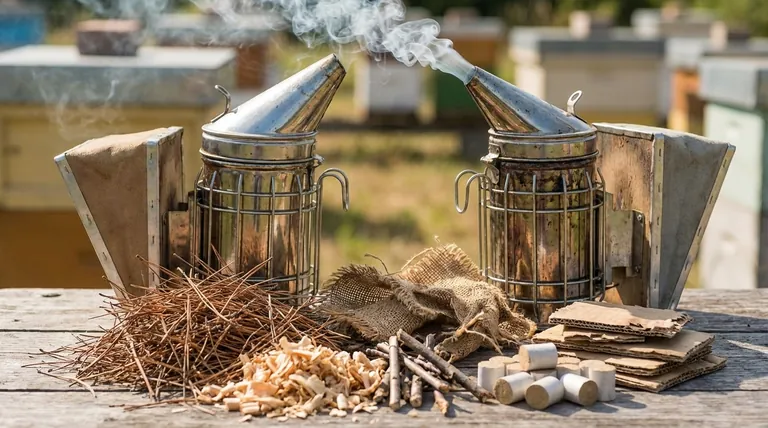
Summary Table:
| Fuel Type | Examples | Key Characteristics |
|---|---|---|
| Woody & Dense | Pine needles, wood shavings, rotten wood | Long, slow burn; ideal for a base layer |
| Fibrous & Quick-Light | Burlap, untreated cotton, cardboard | Lights easily; good for starting the smoker |
| Dried Botanicals | Lavender, bay leaves, sumac bobs | Aromatic addition; use sparingly on top |
Ensure Your Apiary's Success with the Right Equipment
Choosing the correct, safe fuel is just one part of effective hive management. Equip your operation with professional-grade supplies from HONESTBEE. We supply commercial apiaries and beekeeping equipment distributors with the durable, reliable tools they need to thrive—from smokers and protective gear to honey extraction systems.
Let's discuss your wholesale needs. Contact our team today to get dependable equipment that supports the health of your bees and the productivity of your business.
Visual Guide
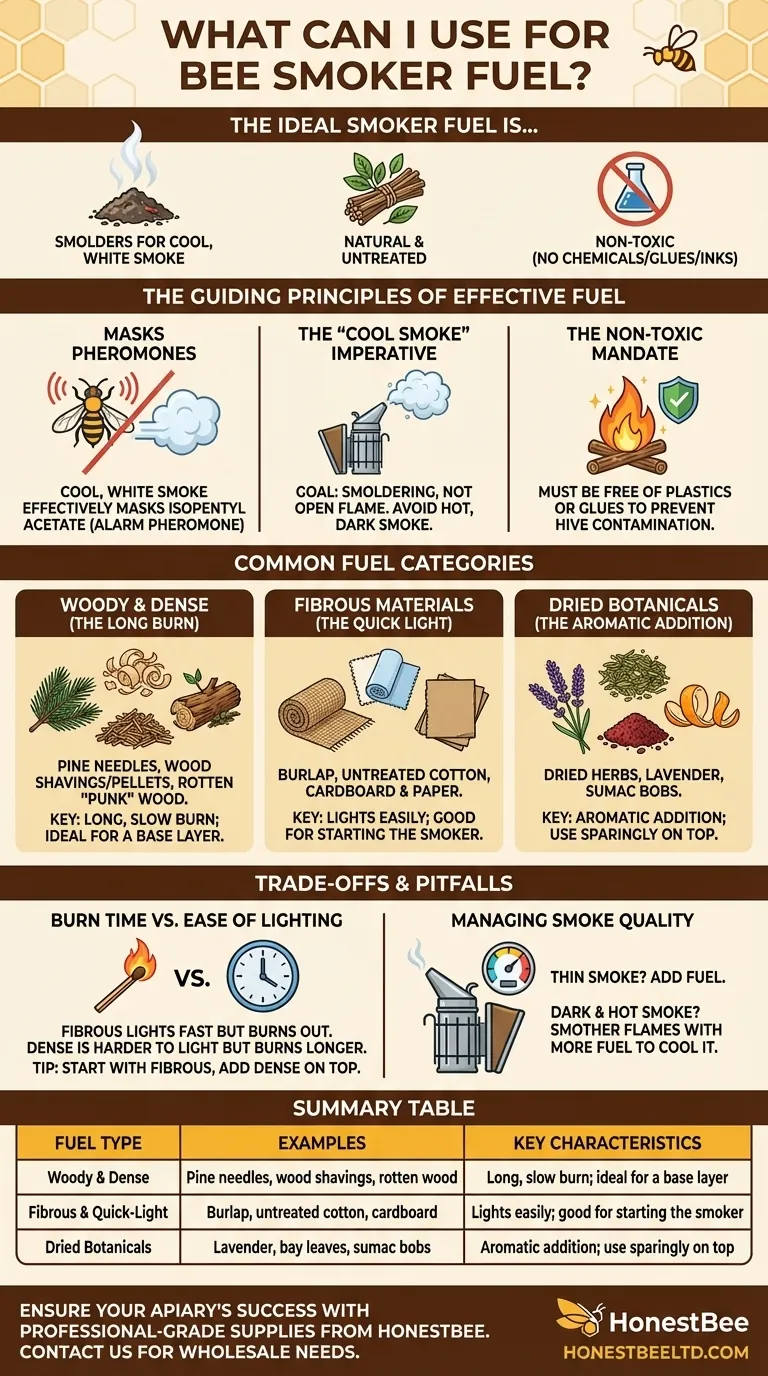
Related Products
- 54-Piece Smoker Fuel Pellets for Beekeeping Beehive Smoker Fuel
- Stainless Steel Honey Bee Smoker Hive and Honeycomb Smoker for Beekeeping
- Premium Traditional Copper Bee Smoker with Bellows
- Economy Galvanized Beekeeping Honey Bee Smoker for Wholesale
- European Stainless Steel Bee Smoker for Honey Bee Hive
People Also Ask
- What is the best material for a bee smoker? Choose the Right Fuel for a Calm Hive
- What are important considerations when choosing smoker fuel? A Guide to Safe, Effective Beekeeping
- What is best to burn in a bee smoker? Master the Layered Fuel Technique for Calm Hives
- What fuels are recommended for beehive smokers? Master the Art of Calm, Controlled Inspections
- What to put in a bee hive smoker? A Guide to Natural, Calming Fuels








